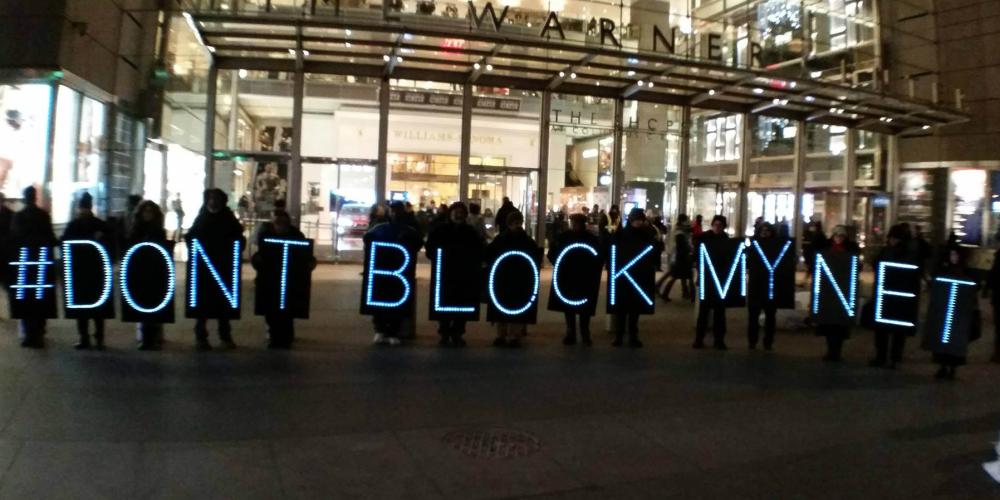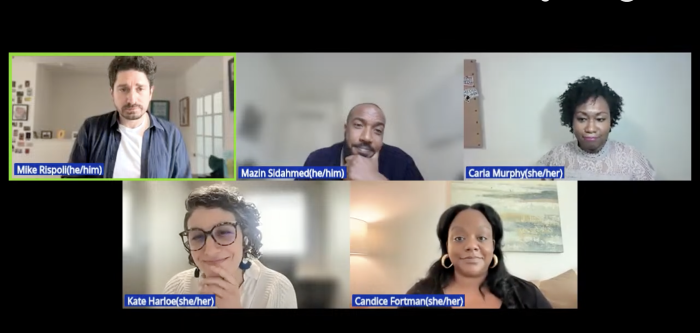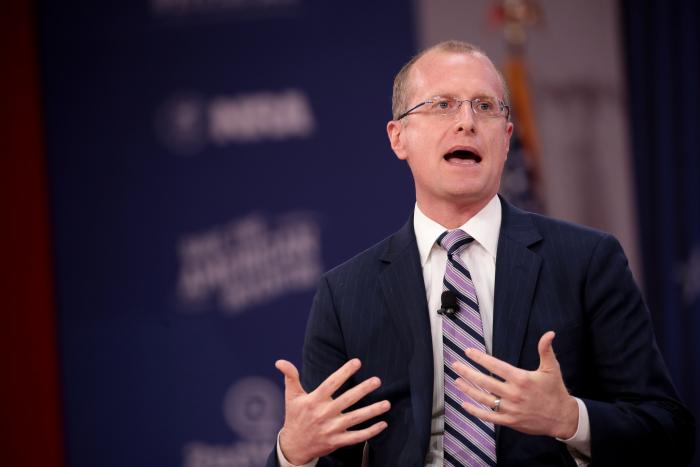Net Neutrality Violations: A History of Abuse

For years a lineup of phone- and cable-industry spokespeople has called Net Neutrality “a solution in search of a problem.”
The principle that protects free speech and innovation online is irrelevant, they claim, as blocking has never, ever happened. And if it did, they add, market forces would compel internet service providers to correct course and reopen their networks.
In reality, many providers both in the United States and abroad have violated the principles of Net Neutrality — and they plan to continue doing so in the future.
This history of abuse revealed a problem that the FCC’s 2015 Net Neutrality protections solved. After a Trump FCC stripped them away in 2017 a patchwork of state-level Net Neutrality laws has had to keep the likes of AT&T, Comcast and Verizon honest. Restoring a national standard is needed to ensure that everyone in the United States is protected.
Here’s what happens when cable and phone companies are left to their own devices:
MADISON RIVER: In 2005, North Carolina ISP Madison River Communications blocked the voice-over-internet protocol (VOIP) service Vonage. Vonage filed a complaint with the FCC after receiving a slew of customer complaints. The FCC stepped in to sanction Madison River and prevent further blocking, but it lacks the authority to stop this kind of abuse today.
COMCAST: In 2007, the nation’s largest ISP, Comcast, began secretly blocking peer-to-peer technologies that its customers were using over its network. Users of services like BitTorrent and Gnutella were unable to connect to these services. 2007 investigations from the Associated Press, the Electronic Frontier Foundation and others confirmed that Comcast was indeed blocking or slowing file-sharing applications without disclosing this fact to its customers.
TELUS: In 2005, Canada’s second-largest telecommunications company, Telus, began blocking access to a server that hosted a website supporting a labor strike against the company. Researchers at Harvard and the University of Toronto found that this action resulted in Telus blocking an additional 766 unrelated sites.
AT&T: From 2007–2009, AT&T forced Apple to block Skype and other competing VOIP phone services on the iPhone. The wireless provider wanted to prevent iPhone users from using any application that would allow them to make calls on such “over-the-top” voice services. The Google Voice app received similar treatment from carriers like AT&T when it came on the scene in 2009.
WINDSTREAM: In 2010, Windstream Communications, a DSL provider with more than 1 million customers at the time, copped to hijacking user-search queries made using the Google toolbar within Firefox. Users who believed they had set the browser to the search engine of their choice were redirected to Windstream’s own search portal and results.
MetroPCS: In 2011, MetroPCS, at the time one of the top-five U.S. wireless carriers, announced plans to block streaming video over its 4G network from all sources except YouTube. MetroPCS then threw its weight behind Verizon’s court challenge against the FCC’s 2010 open internet ruling, hoping that rejection of the agency’s authority would allow the company to continue its anti-consumer practices.
PAXFIRE: In 2011, the Electronic Frontier Foundation found that several small ISPs were redirecting search queries via the vendor Paxfire. The ISPs identified in the initial Electronic Frontier Foundation report included Cavalier, Cogent, Frontier, Fuse, DirecPC, RCN and Wide Open West. Paxfire would intercept a person’s search request at Bing and Yahoo and redirect it to another page. By skipping over the search service’s results, the participating ISPs would collect referral fees for delivering users to select websites.
AT&T, SPRINT and VERIZON: From 2011–2013, AT&T, Sprint and Verizon blocked Google Wallet, a mobile-payment system that competed with a similar service called Isis, which all three companies had a stake in developing.
EUROPE: A 2012 report from the Body of European Regulators for Electronic Communications found that violations of Net Neutrality affected at least one in five users in Europe. The report found that blocked or slowed connections to services like VOIP, peer-to-peer technologies, gaming applications and email were commonplace.
VERIZON: In 2012, the FCC caught Verizon Wireless blocking people from using tethering applications on their phones. Verizon had asked Google to remove 11 free tethering applications from the Android marketplace. These applications allowed users to circumvent Verizon’s $20 tethering fee and turn their smartphones into Wi-Fi hot spots. By blocking those applications, Verizon violated a Net Neutrality pledge it made to the FCC as a condition of the 2008 airwaves auction.
AT&T: In 2012, AT&T announced that it would disable the FaceTime video-calling app on its customers’ iPhones unless they subscribed to a more expensive text-and-voice plan. AT&T had one goal in mind: separating customers from more of their money by blocking alternatives to AT&T’s own products.
VERIZON AND OTHER ISPs: For years customers complained that several access providers including Verizon were “hijacking” customers’ online searches by rerouting queries to websites — often those the ISP owned — that the customers did not request.
COMCAST: In 2014, Comcast modified third-party webpages in transit to customers, inserting JavaScript for company ads and introducing potential security vulnerabilities. People using the company’s many publicly available Wi-Fi hotspots noticed the unwelcome ads.
NETWORK-WIDE: Throughout 2013 and early 2014, people across the country experienced slower speeds when trying to connect to certain kinds of websites and applications. Many complained about underperforming streaming video from sites like Netflix. Others had trouble connecting to video-conference sites and making voice calls over the internet.
The common denominator for all of these problems, unbeknownst to users at the time, was their ISPs’ failure to provide enough capacity for this traffic to make it on to their networks in the first place. In other words, the problem was not congestion on the broadband lines coming into homes and businesses, but at the “interconnection” point where the traffic users’ request from other parts of the internet first comes into the ISPs’ networks.
An Open Technology Institute investigation that drew on the Measurement Lab’s data analysis found these slowdowns were the result of “intentional policies by some of the nation’s largest communications companies, which led to significant, months-long degradation of a consumer product for millions of people.” Major broadband providers, including AT&T, Time Warner Cable and Verizon, deliberately limited the capacity at these interconnection points, effectively throttling the delivery of content to thousands of U.S. businesses and residential customers across the country.
NETWORK-WIDE: A 2019 study by Northeastern University and the University of Massachusetts found that ISP throttling of network services happens "all the time." Researchers analyzed data from more than 126,000 smartphones to determine whether data speeds are being slowed, or throttled, for specific mobile services. They found, "just about every wireless carrier is guilty of throttling video platforms and streaming services unevenly."
VERIZON: During oral arguments in Verizon v. FCC in 2013, judges asked whether the phone giant would favor some preferred services, content or sites over others if the court overruled the agency’s existing open internet rules. Verizon counsel Helgi Walker had this to say: “I’m authorized to state from my client today that but for these rules we would be exploring those types of arrangements.” Walker’s admission might have gone unnoticed had she not repeated it on at least five separate occasions during arguments.
The court struck down the FCC’s rules in January 2014 — and in May, FCC Chairman Tom Wheeler opened a public proceeding to consider a new order.
In response millions of people urged the FCC to reclassify broadband providers as common carriers and in February 2015, the agency did just that.
But the Trump FCC’s Republican majority destroyed all Net Neutrality protections, ignoring the outcry from millions of people.
President Biden wants these rules reinstated. And now the agency has the fifth FCC commissioner it needs to restore these essential protections of this essential infrastructure.
Meanwhile, in the absence of any rules, violations of the open internet will become more and more common.
Don’t believe me? Let history be the guide.
[Article updated on Sept. 28, 2023]
Help Free Press keep fighting to protect the free and open internet: Donate today.





